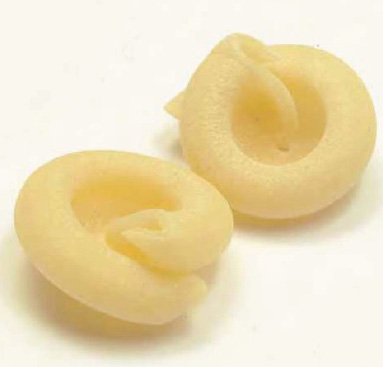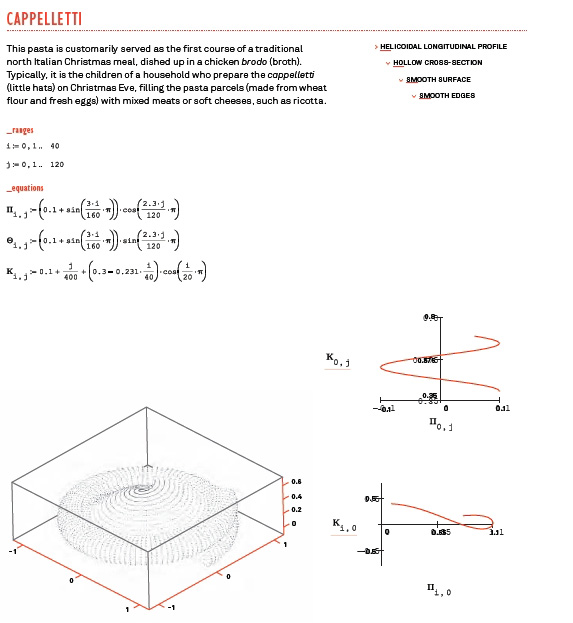This is about brilliance. And fun. And quirkiness. And pasta.
By training, I am an applied mathematician. When people ask why I blog about food, the answer is simple: I like food and I like writing. My training as a math geek has taught me to appreciate elegance, whether it is in the form of equations, food, or writing.
I am not alone. IJP Architects is an experimental architecture firm in London founded by George Legendre and Marc Fouquet. Mr. Legendre is a very dedicated man, spending evening hours at the office and eating the pasta dishes created by one of his fellow architects, Marco Guarnieri. One night, apparently under the influence of additional Chianti, the two forged the idea for this book. They use equations daily to design — to describe — buildings. Why not do the same for their pasta passion?
And so Pasta by Design was born. You’ll see it now in your bookstores in the new cooking book section. And it is filled with recipes. But these recipes are different. These are the mathematical recipes — the equations — you would use to describe a specific pasta. Like that beautiful cappelletti pictured above.
Here are the equations you would use to describe that complex cappelletti shape:
Okay. If seeing those things, those sin and cos functions from trigonometry, brings back dark images of high school, well, relax. Don’t panic. There will not be quiz here. Instead, try to sit back and wonder at what is here. Some moderately complex equations can actually describe this intriguing pasta shape. Perhaps the “gap” between the world of math and the world of food is just a bit more narrow than you might have imagined.
And there are over 90 pasta shapes in the book. Some simple, like spaghetti. Some very complex, like tortellini or pappardelle. There are pastas you haven’t seen before, but that have intrinsic beauty both in their physical shape and the equations that describe them.
Pasta by Design includes a “Family Tree” that shows how all these pastas are related by their geometric properties: type of edges, surface design, cross-section and other factors. It’s one of those diagrams you just sit and marvel at.
Who is this book for? Geeks, of course. Food geeks in particular. Designers, people into visualization, techy pasta eaters, … There are many, many people who will pick up this book, be charmed, and want to browse through it for the rest of their lives. The book is that wondrous. If you doubt me, then go pick up a copy in your bookstore. I bet you a triple espresso that you won’t put it down after just 10 seconds, probably not after 10 minutes.




Talk about giving new slant on…I ate my homework. Bravo
It’s a great book. Can only be described as unique.